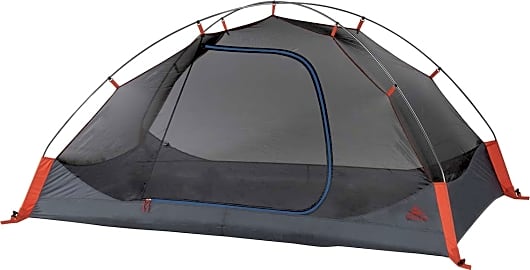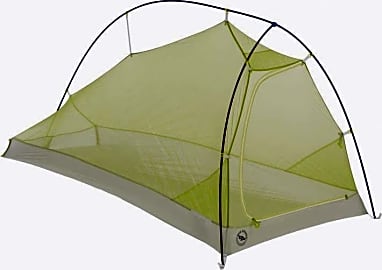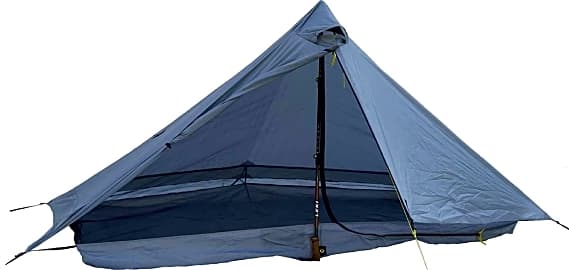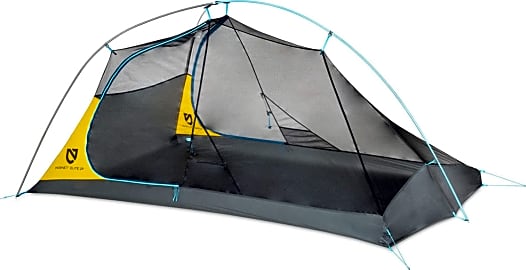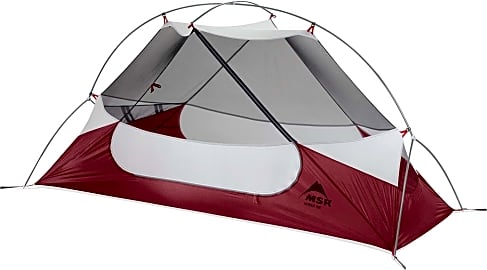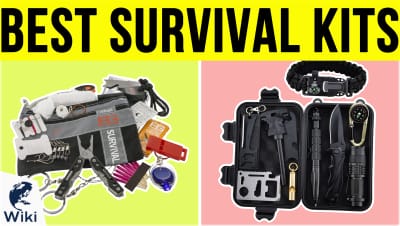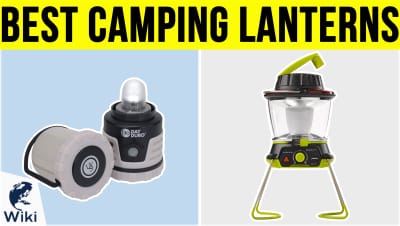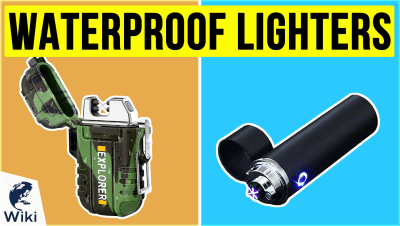The 10 Best 1 Person Tents

This wiki has been updated 34 times since it was first published in June of 2016. If you appreciate the solitude of the wilderness or prefer to not share accommodations when in the great outdoors, one of these one-person tents will be perfect for you. They offer the personal space you need without being overly bulky or heavy, so you can enjoy camping or extended hiking trips without becoming fatigued. There's a wide variety of configurations offered in a range of budgets. When users buy our independently chosen editorial recommendations, we may earn commissions to help fund the Wiki.
Editor's Notes
April 21, 2021:
We removed one bivy pick for availability concerns, but the Kodiak Canvas Swag remains one of the most thoughtfully designed such models, so we still recommend it. Another minor change was the update to the newest version of the Nemo Hornet Elite. In the case of this ultra-high-end, ultralight model, a year's difference makes a noticeable difference in terms of geometry, which can maximize space inside a tent and help retain heat better, while also resisting condensation.
One notable change is the addition of the Six Moon Designs Lunar Solo. This one's engineered specifically for ultralight backpackers who aren't quite ready for the minimalist tarp shelter experience. The Lunar Solo has almost all the trappings of a high-end model, but comes at a mid-range price, and for solo hikers under 6 feet, it's hard to argue against.
We also added the River Country Trekker. This one's especially simple, surprisingly effective, and highly affordable, so for casual campers on a strict budget, it's a great choice.
January 21, 2020:
The Alps Mountaineering Zephyr may have an attractive design, but some users experience leaks in rainy conditions, so we have decided to remove it. But when it comes to shelters you can depend on, we still like both the Alps Mountaineering Lynx and the Teton Sports Mountain Ultra. Neither are painfully expensive, and they offer all the features you expect for comfort: robust seams, a well-constructed rainfly, micro-mesh that keeps bugs out, and more. Of the two, the Lynx is perhaps the better choice for inclement weather, as its wall have less mesh and do a better job of keeping wind and rain at bay. On the pricier side, we've updated our Big Agnes pick to the Big Agnes Fly Creek HV Platinum, an ultralight backpacking tent that offers a roomy living space despite its compact size. Finally, if you're looking for an option that's closer to a bivy sack, you might consider the Kodiak Canvas Swag or the Winterial Personal Bivy. You shouldn't expect to stand up in them, and they aren't necessarily comfortable for lounging around; however, they offer shelter in areas with limited space and can be set up with very little hassle.
Special Honors
Tarptent Rainbow Thru-hikers and bikepackers will like the Tarptent Rainbow, a lightweight choice with a small packed size that easily goes anywhere you do. It is strong enough to hold up in snow, although the interior may not be incredibly warm, and can be pitched free-standing with trekking poles, so it's a versatile choice. tarptent.com
Hilleberg Unna It's something of an investment, but the Hilleberg Unna was designed for easy pitching on any terrain and in small spaces. Offered in several handsome colors, this model boasts enough space to accommodate two sleepers if necessary, or one occupant and a reasonable amount of gear. hilleberg.com
The One by Gossamer Gear The One by Gossamer Gear packs an impressive number of features into its compact design. There's an interior clothes line, for instance, as well as reflective tie outs that can keep everything secure in windy conditions. Plus, you won't have to remove your gloves to handle the knotted guylines. gossamergear.com
Why The One Person Tent Is King
If you plan to own several tents for different situations, the one person tent is going to be the piece you add to the kit you want to be the lightest.
A good camping trip will take you to a remote place where you can feel pleasantly removed from the stresses of modern society. A lot of people like to camp in groups, or with at least one other person, as it can prove to be one of the most powerful bonding experiences imaginable. Some folks like to go it alone, however. Camping alone can bring with it all the meditative pleasures of solitude combined with awe-inspiring natural beauty and the satisfaction of self-reliance.
A one person tent isn’t necessarily a tool exclusively for the latter style of camper, as you could easily prefer to camp in a group, but to also bring your own tent because sharing a confined space with a handful of your friends doesn’t appeal to you. Using a one person tent in a group also cuts down on the potential for fighting over how to properly pitch your sleeping space, since you’ll be the only one assembling it on site. That can be great for group cohesion, as an argument is a poor way to start a vacation.
Once you’re inside your one person tent — whether or not you’re camping with friends — you’ll have a space that’s totally your own. You can do whatever you like in there, whether that means keeping the lantern on all night as you read from some Emerson or Thoreau, or sleeping in the buff away from the prying eyes of bears and buddies alike.
If you plan to own several tents for different situations, the one person tent is going to be the piece you add to the kit you want to be the lightest. Quite possibly the greatest advantage of the one person tent is its weight, and if you have to hike a long way into your campsite, nothing will tire you out more quickly than a heavy pack. By using a one person tent rather than schlepping your two person model along, you’re going to save yourself a lot of weight and have more energy to enjoy your experience.
What To Look For In A One Person Tent
Shelter is one of the basic human necessities, and all the one person tents out there will provide you with some form of protection from the elements. There are a few very important things to consider when comparing one person options, however, to make sure that you’re not only getting the best bang for your buck, but also that you’re going to be adequately protected when you’re out in the wilderness.
And as far as setup goes, most of the options on the market are very easy to assemble, and the smaller sizes of these one person units make them easier than most.
The first, and possibly most important, consideration is the weather. Knowing the conditions in which you plan to use your one person tent is vital to figuring out which model will be your best pick. In very hot climates, for example, you might want to look for a model with removable panels that reveal mesh walls, allowing for maximum airflow on sultry days and nights. If that climate is also wet, however, you’re going to want to make sure that the unit comes with an effective rain flap, and that its floor won’t soak if it really starts coming down.
The shape of your tent is another big factor. Unlike multiple-person tents, which mostly follow the same design schematics, one person tents range from spacious and semi-traditional in shape to long thin designs that may feel like tall coffins to the claustrophobic among us. If you want your one person tent to be able to accommodate a second body in the event of an emergency, a more spacious option is ideal.
Weight and setup are the two other factors that deserve consideration here. For the most part, you’re going to want to get your hands on the lightest model you can find that fits within your budget. Just be aware of what that model’s company has taken away from the tent to reduce its weight, so you don’t end up camping on the Appalachian Trail in February in a tent that’s meant for the desert in June. And as far as setup goes, most of the options on the market are very easy to assemble, and the smaller sizes of these one person units make them easier than most. It is worth noting whether a given unit’s poles pop into place, or whether you’ll have to do some more advanced assembly along the way.
Other Essential Camping Accessories
Heading into the wilderness should be fun and relaxing, but arriving at your campsite without certain essentials can make the entire experience unbelievably stressful. There are a few things you absolutely must have with you when you leave society behind, and a few practices you can employ to ensure you don’t leave home without them.
That way, when it’s time to prep for your journey, you’ll be confident that you’ve remembered everything important, and that it’ll be accessible exactly when you need it.
For starters, when you’re putting together a camping pack, you’re going to need enough food and water to get you through your intended length of stay. That said, it’s also advisable to bring extra rations in the event that you get lost or injured. While that would be a lot of heavy water to carry, you can easily invest in some water purification tablets instead that would allow you drink from sources in the wild.
While true for any camping situation, lone campers especially should bring along a survival kit and a small first aid kit. The implements in each of these kits, from antibacterial ointments to fishing hooks, could mean the difference between life and death in the wild.
Sources of light are also highly recommended, whether a headlamp, lantern, flashlight, or all three. Fire is traditionally an important light source in the wilderness, so something to help you get that started, like a wind- or waterproof lighter or a flint and steel set is also recommended.
Once you’ve assembled all your most important gear, you should lay it out on your bed next to your pack. Load it up and unpack it several times, thinking critically about which items you’ll need and when you’ll need them. That way, when it’s time to prep for your journey, you’ll be confident that you’ve remembered everything important, and that it’ll be accessible exactly when you need it.



